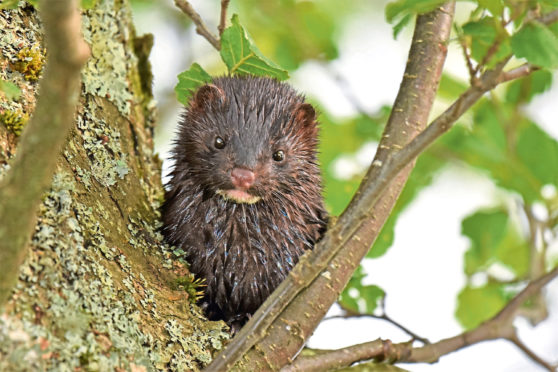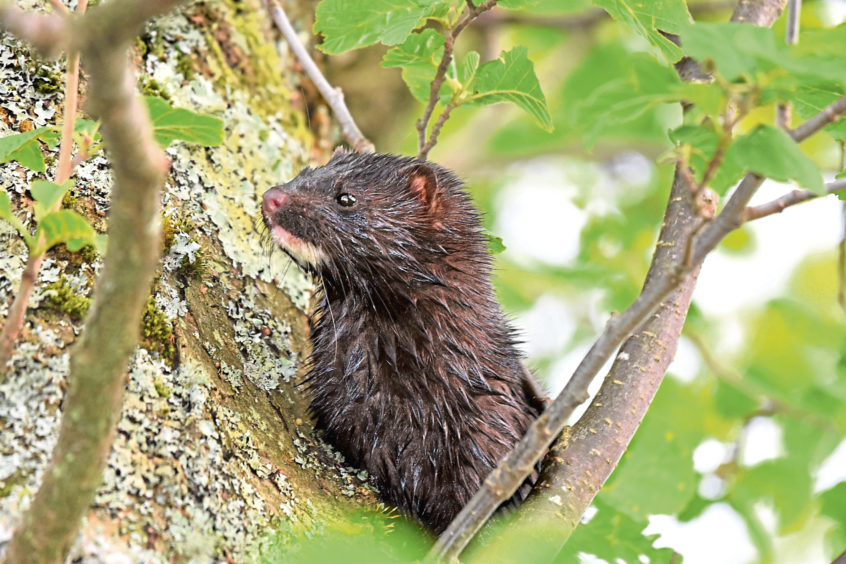The American mink was widely kept in fur farms in the mid-20th century. Some escaped and it was first reported breeding in the wild in Britain in 1956.
Sometimes the strangest things happen. I was making my way along the banks of the River Devon by the edge of the Ochils, accompanied by Lottie, our spirited Welsh springer, who trotted ahead, sniffing every nook and cranny as spaniels are so wired to do.
Suddenly, Lottie stirs a commotion by the waterside, and a dark furred animal, about the size of a ferret, scoots up a bankside alder and perches on a 15ft high branch where it peers down at us nervously. It was a mink, and truth be told, I never realised they were such good climbers.
Indeed, I was surprised this mink hadn’t taken to the water instead, for they are extremely proficient swimmers, but perhaps Lottie had inadvertently cut-off that escape route. The mink continued to look down, its claws gripping the bark so tenaciously that it obviously had no intention of descending until certain we were long gone.
As I examined the creature through my camera lens, there was no denying that this animal was rather attractive with its cute weaselly face, little white chin and thick-furred body. Of course, the flip-side is that mink are not native to our shores – they hail from North America – and are descended from fur farm escapees from several decades ago.
As such, mink are universally detested by river managers and conservationists because of the havoc they wreak upon native wildlife. They will take waterfowl and their chicks and eggs, prey upon trout, and are more than capable of destroying vulnerable sand martin colonies.
Mink are also the villains when it comes to the demise of our water vole populations, which have plummeted by more than 90% in recent times. And, as I had just discovered, mink are also adept climbers, so there is every possibility they plunder the tree nests of birds, too.
But it is not their fault they are here, it is entirely ours, and just one example of many that illustrates our inherent capacity to interfere with the natural way of things to the detriment of the environment. Indeed, as Lottie and I left the mink in peace and continued on our walk, there were many other signs of alien species along the riverbank.
Himalayan balsam was prolific by several parts of the path, which grows tall and can shade out native plants. On shingle banks in the river, there was an abundance of monkey-flower, a more benign North American invader, perhaps, and certainly appealing to the eye with its vibrant yellow flowers. The list goes on, non-natives are all around us, whether by river, hill, forest, or sea.
At least mink don’t seem to be as abundant on the River Devon as they were a decade or so ago, possibly because otters, which are larger, are doing well and out-competing them. If this is the case, then it does show that at least some of our natives are capable of biting back.











